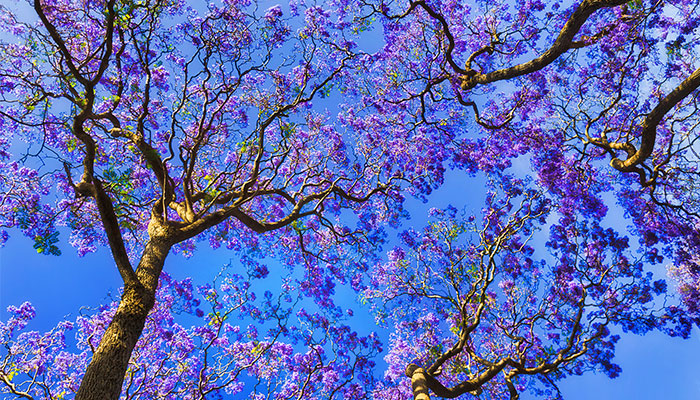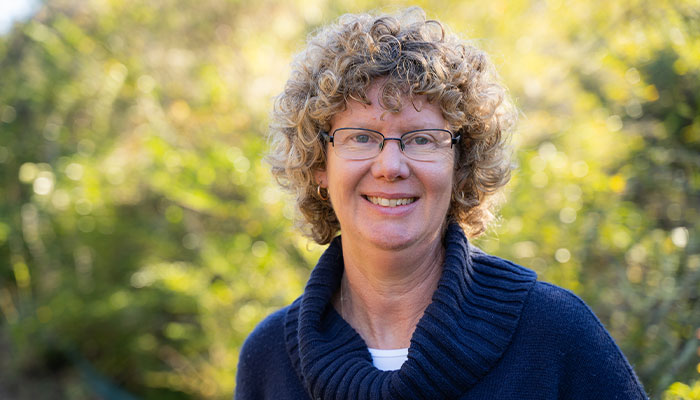Macquarie University's Which Where Plant Project has identified trees that will make the best shade for Western Sydney school yards as hotter summers make it harder for kids to get out and play.

Play time: A safe outdoor environment is paramount for the development of children, who are also vulnerable to intense heat.
According to the Bureau of Meteorology, 2019 was Australia's warmest year on record, with the annual national mean temperature 1.52°C above average. Across Australia, both minimum and maximum temperatures were above average and most of Australia saw their average rainfalls decline.
As part of a project aimed at identifying school microclimates and how to cool them down, Macquarie University Distinguished Professor Michelle Leishman led a team that looked at the 30 most commonly planted trees in Western Sydney and selected the best ones for school playgrounds.
This is no easy task once you ask these questions: Are the leaves poisonous? Do they drop soft fruit that children could slip on? Do they produce pollen that is an irritant? Do they have green limbs that are at risk of dropping?
We need climate smart trees that can cope with the increase of 49°C days we are expecting.
"We know it's important to have trees. The next question is, which trees?" Leishman says. "This is where the Which Where Plant Project comes in."
The Which Where Plant Project is about "selecting the right plants for the right urban space with an eye on the future".
"We need climate smart trees that can cope with the increase of 49°C days we are expecting," Leishman says.
"The most suitable trees we found for school yards in the Western Sydney area were jacaranda (Jacaranda mimosifolia) and weeping lilly pilly (Syzygium floribundum), as well as weeping bottlebrush (Callistemon viminalis) and Queensland brush box (Lophostemon confertus) "
A safe outdoor environment is paramount to stimulate physical and cognitive development of children. Intense summer heat can be dangerous for children as their smaller bodies make them far more vulnerable to intense heat.
An adult's optimal thermal comfort is 21-22°C but a UK study found that a child's is 1.9°C - 2.8°C lower than that of adults.
Leishman hopes the project findings will be used to inform school design and shading and to retro-fit current schools.
Unshaded surfaces hit 70 degrees
The identification of the most suitable school yard trees came after Macquarie University teamed up with Western Sydney University to conduct a project called School Microclimates, which is a part of the Cool Schools initiative of Western Sydney University, and co-funded by the Department of Planning, Industry and Environment, WSU and Macquarie.

Into the blue: Jacaranda is one of the species identified by the School Microclimates project as most suitable for school yards in Western Sydney.
Over the 2019/2020 summer holidays, the team of Leishman and the study's lead author, Dr. Sebastian Pfautsch, collected more than 100,000 data points to document heat at a public primary school in Sydney that had been built in 1949.
Although the school was closed during the study for summer holidays, data was only collected during normal operating hours when staff and students would usually be on site. Their findings showed the average temperature was 28.7°C, with six days over 35°C and two days above a whopping 40°C.
Trees do two things to help cool the environment. They provide shade and they act like an evaporative cooler.
"Temperatures in excess of 50°C were measured in certain areas of the school," Leishman explains.
"The hottest surfaces were bare soil, unshaded asphalt and artificial grass. Artificial grass is used in a lot of playgrounds because the heavy foot traffic means it's impossible to grow real grass."
Some unshaded surfaces reached as high as 70°C but shading reduced the temperature by 20°C.
Cheap and effective cooling
Leishman's team used aerial photography to map the total tree canopy, identify each tree to species-level and measure their size. As well, ecophysiological instruments were used to measure tree water use.
"Trees do two things to help cool the environment. They provide shade and they act like an evaporative cooler," Leishman explains.
"They suck the water from the ground, bring it up through their hydraulic system and release it through their leaves. It's the same as a human perspiring to cool down.
"Trees are by far the cheapest option to achieve cooling but they also allow for shaded open spaces which gets children outside."

Michelle Leishman (pictured) is a Distinguished Professor in the Department of Biological Sciences and leads the Green Cities Which Plant Where project at Macquarie University.






